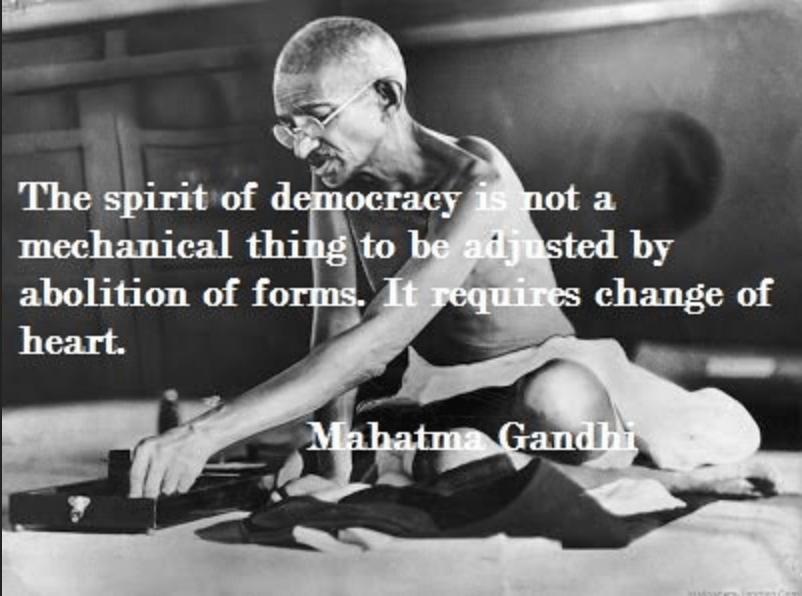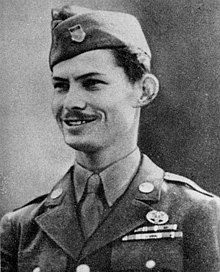One cold winter night in May 1893, a train screeched to a halt in a station. A swarm of passengers boarded the engine on a journey to Pretoria, South Africa; among the crowd was a young and eager lawyer with a first class ticket. He sat in the seat designated by the voucher he held in his hand. Upon departure, the young lawyer’s darker complexion caught the attention of a white passenger. The white man objected that a ‘colored’ man was allowed to sit in first class, on what was then, a segregated train. When questioned regarding the seat, the lawyer provided his voucher and identification to confirm he was in the proper place. Nevertheless, the comptroller physically removed the young Indian lawyer from the compartment and abandoned him in Pietermaritzburg.1 The young man was left out in the chilly winter night, but this act of racism ignited a flame deep within the freezing body of young lawyer, Mahatma Gandhi. He made the conscious decision to stay in South Africa, and combat racial discrimination in what would be his first fight for human rights.

At the turn of the twentieth century, South Africa was engulfed in a war between Boers and Brits, sparked by the conflict between British imperial interests and local Boer nationalism (from descendants of Dutch settlers).2 Boers are decendants of the Dutch that reside in South Africa.3 Gandhi saw, the Second Boer War, as it is often commonly referred to, as an opportunity to pledge allegiance to the Empire; he organized a group of African born Indians as stretcher-bearers to aid fallen British troops in the war zone. Gandhi aspired to gain equality for Indians within the South African society as British subjects, a limited integration into a white society.4 The violent conflict between the Boers and Brits led to the signing of the Treaty of Vereeniging in 1902. The peace treaty settled the affairs between the South African Republic and the Orange Free State on one side and the United Kingdom on the other.5 However, this did not change racially discriminatory practices in the whole region.

Even worse, in July 1907, the South African government passed an ordinance called the Black Act.This required Indians to be fingerprinted, registered, and to carry identification cards at all times, and failure to do so was punishable by prison, heavy fines, or deportation.6 By this time, Gandhi had realized his overreaching life goal of saradaya which means the “welfare of all” and or “to lift of all”. The Indian terms describing these principles are satya (truth), ahimsa (nonviolence), and tapasya, (selfsuffering).7 Gandhi used this idea in response to the Black Act. He and other members of the satyagraha (truth and nonviolent disobedience) movement picketed outside of the registration offices; these actions led to the arrest of the leaders of the movement.8 This was Gandhi’s first arrest for disobedience; he was sentenced on January 10, 1908, to two months of simple imprisonment.9 This was the first of six arrests in South Africa; three of with involving failure to produce registration.10
Throughout his time in South Africa, Gandhi worked tirelessly to improve the rights of immigrant Indians like him. This is where he developed and practiced his creed of passive resistance.11 His efforts paved the way for a change in policy. In fact, the Gandhian influence dominated freedom struggles on the African continent right up to the 1960s because of the power it generated and the unity it forged among the usually powerless. Nonviolence was the official stance of all major African coalitions, and the South African African National Congress (ANC) remained implacably opposed to violence for most of its existence.12 South Africa because of apartheid was placed on the agenda of the United Nations for the first time in 1946 by India regarding the treatment of people of Indian origin living in South Africa.13 South Africa’s apartheid policies clearly violated provisions of the U.N. Charter and human rights instruments adopted pursuant to it.14. Apartheid has also negatively impacted relations between the Republic of South Africa and India because of the subordinate status of people of Indian decent in South Africa.15 The General Assembly highlighted the deficit of the Universal Declaration of Human Rights in the apartheid policy within South Africa. Thanks to the work of Gandhi and satyagraha, the world took notice of inequalities caused by South African discriminatory policies.

South Africa was the land of the unfortunate encounter with institutional racism for Mahatma Gandhi. He found and established values in which he could fight against racial discrimination and civil rights violations for the rest of his life. Gandhi sated, “during ten years, that is, until 1914, excepting the intervals of my enforced rest in prison, there was hardly an issue of Indian Opinion without an article from me… the journal became for me a training in self-restraint, and for friends a medium to keep in touch with my thoughts.”16 He spent ten years living in South Africa, fighting for human rights, and writing about his journey for the Indian Opinion, an experience and self reflection triggered by the discrimination Indians faced in South Africa. He used adversity to shape his determination and mindset and framework of nonviolence for his future endeavors including India’s independence from the United Kingdom.
- “Gandhi in South Africa,” April 17, 2013, Maps of India. ↵
- Ashwin Desai and Goolam H Vahed, The South African Gandhi: Stretcher-Bearer of Empire, (Stanford University Press, 2015), 19. ↵
- Encyclopedia Britannica Online, s.v. “Boer,” by Shiveta Singh, last modified 2014. ↵
- Ashwin Desai and Goolam H Vahed, The South African Gandhi: Stretcher-Bearer of Empire, (Stanford University Press, 2015), 20. ↵
- Encyclopedia Britannica Online, s.v. “Peace of Vereeniging South Africa 1902,” by Darshana Das, last modified 2019. ↵
- Annette Barnabas & Paul Sundararajan Clifford, “Mahatma Gandhi – An Indian Model of Servant Leadership,” International Journal of Leadership Studies 7, no.2 (2012): 132-146. ↵
- Daniel M. Mayton II, “Gandhi as Peacebuilder: The Social Psychology of Satyagraha,” Peace, Conflict, and Violence: Peace Psychology for the 21st Century, (2001): 1-19. ↵
- Annette Barnabas & Paul Sundararajan Clifford, “Mahatma Gandhi – An Indian Model of Servant Leadership,” International Journal of Leadership Studies 7, no.2 (2012):132-146. ↵
- George Hendrick, The Influence of Thoreau’s ‘Civil Disobedience’ on Gandhi’s Satyagraha, (The New England Quarterly, 1957), 29. ↵
- “Years of Arrests & Imprisonment of Mahatma Gandhi,” 2005. ↵
- Richard Attenborough, The Words of Gandhi (HarperCollins, 1999), 39-42. ↵
- Nelson Mandela, “The Sacred Warrior,” Time Magazine, December 31, 1999, 1. ↵
- “South Africa and the United Nations 1946-1990,” South African History Online, https://www.sahistory.org.za/article/south-africa-and-united-nations-1946-1990. ↵
- United Nations, Charter of the United Nations, (1945). ↵
- Arthur J. Goldberg, “The Status of Apartheid under International Law,” Law Journal Library 13, no.1 (1985): 1-8. ↵
- Mohandas K. Gandhi, Autobiography: The Story of my Experiments with Truth, (1927), 326. ↵



42 comments
Micheala Whitfield
I had no idea Gandhi was a lawyer before his career in human rights! What I am most astonished is I didn’t think that it took one simple situation to drive a man such as him to go through and pursue a task that was considered impossible. The man profiled him and left him at a train station. That was the wire that sparked for Gandhi and his nonviolent fight for human rights. That alone is a mind blowing! What I would like to know is the things he was working on as a lawyer and more of the events he battled in his fight for human rights for Indians. He set his name in history for the good of everyone around him. That will never be forgotten. Great Topic.
Alondra Lozano
This was a great article. It was interesting to learn how Mahatma Gandhi fought for equality. What caught my attention was at the beginning when they got him off the train even though Gandhi had payed for the ticket, was sitting in the correct section, and was not causing disruption. He is known world wide and is admired greatly for his work to have equal rights.
Aaron Sandoval
I found this article very interesting, I know of the stories of Gandhi but never really learned as to why he fought, and why he continued t fight. Reading this article really helped me understand more about Gandhi and who he was as a person, and how he became such a leading voice in human and civil rights. This article was well done and tells the story that not many people are aware of, and you did a good job of telling that story.
Genesis Moro Otero
Mahatma Ghandi has always been a symbol of peace, but I never knew in depth what that meant. How it all started, with him fighting against the Black Act and segregation in South Africa. Him fighting for minorities, without the use of violence or force truly made him that symbol of peace. Something that also surprised me, was reading about how they fingerprinted Indians and they made them carry their ID’s all the time.
Aracely Beltran
Good job Savannah! I am very impressed with your article. The only way I even knew about the name of Gandhi was in class with Dr. Celine when we discussed the Universal Declaration of Human Rights but never cared to look into it. You did a very amazing job of introducing this historic figure to me and the people who never heard of him. I feel that I can now confidently explain to people who ask about him, who he is and his imprint on the world.
Jose Chaman
Mahatma Gandhi is a symbol of peace worldwide, but I never knew what was the reason that led him to start his fight against racism so far. It is really impressive how Gandhi faced segregationists in South Africa and how he fought against the Black Act. Gandhi is really an icon of peace because he defended racial minorities without the use of force or violence, simply his example and preaching were enough to move heaven and earth.
Anthony Coronado
Wow, what an interesting article, I was completely baffled that Gandhi lived and promotes in the 18th century. Since he is an inspiration to many. As with Gandhi promoting peace in South Africa with confliction with the British. He is an immense figure, as being a nonviolent figure and promoter of civil rights reform.
Luis Jaen
Mahatma Gandhi is a name that is known worldwide, his push for civil rights in South America is truly inspiring and beautiful. Through the face of all of that adversity he was still able to persevere and change the culture of the South American country. This “Satyagraha” style of protesting brought the idea of meeting violence with peace and forgiveness. Overall this is a great article that shows the beauty and importance of peace when trying to change the societal norms.
Melissa Garza
What an amazing read, I loved reading about Gandhi and his fight for equality. I really loved the intro and the imagery you placed in the train scene, it really set up the story beautifully. I didn’t know about the “Black Act,” and the horrible discriminating law that it was. That is really upsetting that they made Indians in South Africa carry their ID’s all the time and even fingerprinted them.
Davis Nickle
Gahndi is a historical figure that I have immense respect for. Not just for tolerating the bigotry and hate that was so rampant in his life time, but for also not striking back with hate like so many other people might have done. The fact that he gained rights for his people without the use of violence is very commendable and that alone has given me much respect for him.